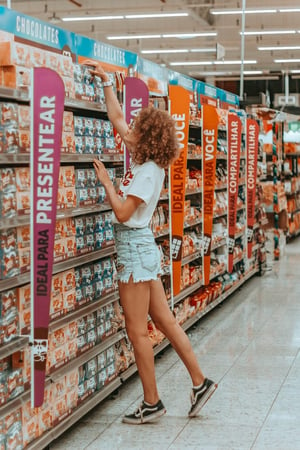
There is a behavioral science behind merchandising and many successful retailers regularly use psychology to appeal to potential buyers. When setting up a retail display, retailers must ask themselves “How are we going to stand out from everyone else?”. One idea to make retailers stand apart from competitors is to create point of purchase displays that speak directly to the basic beliefs of visual retailing psychology. Customers normally make purchasing decisions based off their emotions, which makes the study of human behavior an important factor in organizing and designing for the retail space.
The goal is not to promote your brand but to attract the attention of customers and motivate a purchase. Nowadays everyone is in a hurry and shoppers do not want to waste any time. Studies have shown that the average shopper only spends about 15 seconds at a given shelf and they notice less than 40 percent of the products on display.
There are three simple visual effects that retailers should discuss before creating their retail display:

The first one is color. The way humans perceive color can influence mood and thus purchasing behavior. The color black is associated with sleekness and sophistication, indicating a luxury product. Green is a calming, reassuring color, which also has ties to the natural world and affluence. Yellow is often related to food businesses because in branding and display, it is known to be an appetite stimulant. Red is used to stimulate action because it screams immediacy and is effective when promoting. Blue can be soothing to buyers, promoting confidence and faith in your brand.
The second one is shape. Not only does the shape of a retail display help visually but it can encourage buyers to touch or hold the products. Studies have shown that people tend to prefer environments without angles or sharp edges, due to associating this with signs of danger and the possibility of bodily harm. This can be achieved with open shelving and curved-edge display tables.
The third is location. Accessibility to your product in the store is very important. For example, studies have shown that an end-aisle display will increase sales by 30% due to increased visibility. It is also important to pay attention to which products are positioned around your display. Being next to products that compliment your own makes them more appealing to a buyer.
Instead of just throwing products anywhere on a shelf, retailers should think deeper about who their buyers will be and what interests they will have. When it comes to creating a retail display, the mind is a terrible sales resource to waste.




